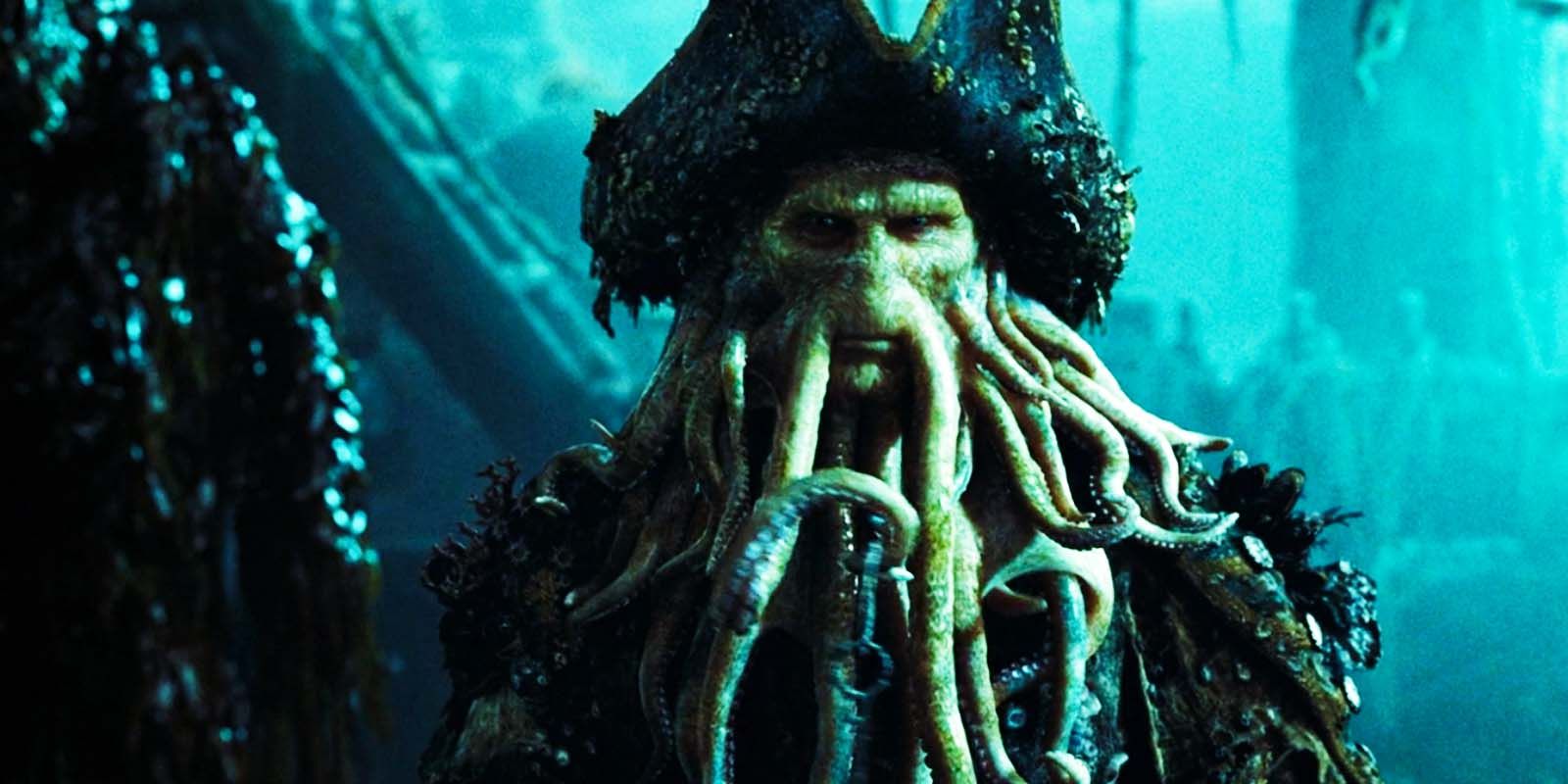While the original Pirates of the Caribbean movie already included multiple show-stopping effects, its 2006 sequel, Dead Man’s Chest, truly raised the stakes with the Flying Dutchman’s crew and a significant character’s CGI design. Pirates of the Caribbean 2 delivered on expanding the world and the characters first introduced in The Curse of the Black Pearl, creating an even more tortuous adventure for Jack Sparrow, Will Turner, and Elizabeth Swann. However, the introduction of new characters and locations in Pirates of the Caribbean: Dead Man’s Chest brought the pirate lore to the front for the swashbuckling blockbuster, which simultaneously allowed the franchise’s second entry to reach new VFX heights.
Based on the legend of Davy Jones’ Locker, Pirates of the Caribbean 2 introduced the octopus-like pirate Davy Jones (Bill Nighy) as its main antagonist, and his greed and violence cemented him as such. Coming to collect on Jack’s promise to join his Flying Dutchman crew in exchange for raising the Black Pearl from the ocean’s depths 13 years prior already highlighted his formidable nature. Still, increasing the stakes from Barbossa’s skeleton crew in the first movie led to making the sequel’s villains and worldbuilding physically more terrifying through advanced special effects, with the CGI utilized by Disney to accomplish this in 2006 being massively ahead of its time.
Pirates Of The Caribbean’s Davy Jones CGI Is Still The Franchise’s Best (& An All-Time Great CGI Character)

The attention to detail that Industrial Light & Magic (ILM) put into creating Davy Jones truly makes him stand out. While the technology utilized for the character was the same that made the entire Flying Dutchman’s crew come to life, his centrality as a character in Pirates of the Caribbean 2 and Nighy’s performance made Davy Jones uniquely peculiar. Many highlighted in Pirates of the Caribbean 2’s bonus feature, “Meet Davy Jones: Anatomy of a Legend,” how Nighy’s performance introduced quirks that almost made Jones comical, adding depth to an otherwise serious villain with a heartbreaking backstory.
Jones’ success as a character relied as much on Nighy’s acting as on ILM’s decision to put CGI on top of the actors, letting them interact with the other actors while shooting on location. At the time, this was a novel approach to filming with CGI characters, and set a high standard for the franchise’s subsequent use of special effects. The technique made Davy Jones’ character more realistic, and it is glaringly evident when his 46 beard tentacles play the organ. The attention to detail of the multiple movements of Jones’ tentacles and their texture still set him aside as one of the best CGI characters ever created. Achieving this in 2006 is even more impressive, with Davy Jones still standing out as the greatest CGI accomplishment in Pirates of the Caribbean‘s five movies.
How Pirates Of The Caribbean Created Davy Jones With CGI
Pirates of the Caribbean 2’s bonus feature, “Meet Davy Jones: Anatomy of a Legend,” goes into detail explaining how IML’s VFX artists added CGI over the Flying Dutchman’s crew, and how meticulous they had to be with Davy Jones’ tentacled beard and its movements. Launching IML’s patented IMocap technology in 2006 specifically with Dead Man’s Chest, they made it possible for the process to be less scientific and more involving of all actors on set. This way, it let Nighy and the actors portraying the Flying Dutchman’s crew members shoot on location alongside the rest of the cast, rather than “shooting a clean plate with nobody in it,” with the performance in a controlled environment.
Pirates of the Caribbean 2’s bonus feature also offers a behind-the-scenes look at particular scenes in the Pirates of the Caribbean sequel, and how aspects like the texture of Davy Jones’ beard tentacles were created by scanning coffee-stained Styrofoam cups, thus contributing to his more realistic depiction. Jones’ beard moving along with him and focusing the audience’s attention on tiny little movements, whether the tentacles were playing the organ or the side valve was expelling smoke, proved exceptional feats. These early accomplishments made the Pirates of the Caribbean sequel’s villain more authentic and allowed the CGI character to stand the test of time.




